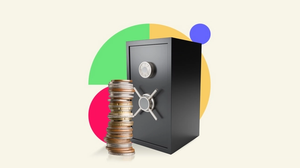Robo performance for low-risk portfolios
28 Jan, 2022
Who were the top performers?
And what exactly is 'low risk'?
The term 'low risk' can mean different things to different people. The financial sector has a rather annoying habit of using these phrases without really explaining what they mean to someone who's new to investing.
So here's a quick summary of what a low-risk robo portfolio should look like and the kind of performance you might expect.
If you invest in low-risk funds, you will be exposed to traditionally 'low risk' assets, like bonds (bonds are basically just IOUs: you buy them and governments or corporates promise to pay back a specified interest rate over time).
Or think of low-risk portfolios like 'souped-up cash' but with a few other riskier assets thrown in the mix.
Only a minority of your investments will be in company shares, whereas some high-risk investments are held almost exclusively in shares.
Low-risk investments generally produce lower returns than medium or high risk, as you might expect.
The good news is that low-risk portfolios are exposed to much less volatility, so you're unlikely to see many big swings in different directions.
Think of a low-risk robo portfolio like a car driving slowly over a few speed bumps (a very high-risk portfolio like crypto is more like an F1 racing circuit).
Common adjectives use to describe low-risk robo portfolios include 'passive', 'defensive' and 'cautious'.
Boring Money collects performance data, in some cases through its own test accounts with the providers. The % allocated to shares is based on the data available at the end of December 2021 and may vary over time.
The portfolios selected here are those identified by Boring Money as the low-risk options most prominently presented to customers. Some providers may have other portfolios available at different risk levels (i.e by offering more than 3 portfolio options).
Average performance figures below are the median average return for the risk level.
Low Risk Portfolios
Lower risk portfolios have returned on average 4.93% since the start of January 2020. For comparison, the FTSE 100 returned -3.12% and the S&P 500 returned 47.34% for the same two-year period. Money in the top paying 2 year fixed Cash ISA is currently earning 1.2% a year.
Find out more







